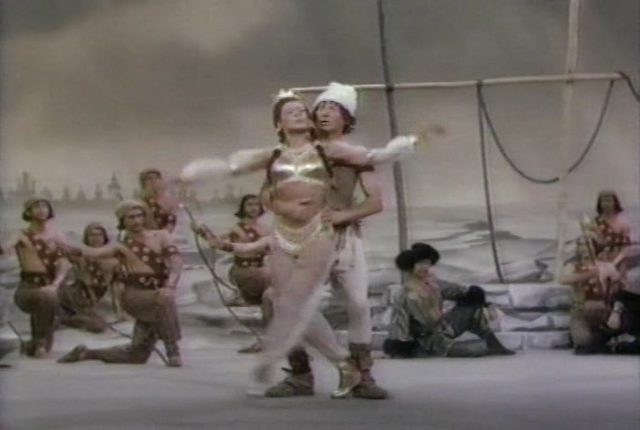by Sedgwick Clark
In their wildest dreams, the six string quartets couldn’t have asked for more. Nor could music lovers, as the Manhattan School of Music rang in the New Year with what it called the “Inaugural Robert Mann String Quartet Institute.” Yes, this is why I left Muncie, but this time my hometown friends could share the event, for the Thursday and Friday master classes were streamed worldwide. Those who couldn’t attend could watch the great man inspire several gifted young musicians in works by Brahms, Bartók, and Beethoven, among others. And now they can see both classes by going to www.dl.msmnyc.edu/archive. Which I highly recommend!
For those not into chamber music, Robert Mann is renowned as the founding first violinist of the Juilliard String Quartet (in 1946) and, moreover, probably the postwar era’s foremost influence on the “American” style of chamber-music playing. Since retiring from the Quartet in 1997, he has continued to perform chamber music, conduct, give master classes, and teach on the faculty of the Manhattan School. The passion and personality of the many JSQ performances I’ve heard over the years in concert and on record were fully evident in his comments at Friday’s session. Indeed, his many expressive tips to the PUBLIQuartet in the Poco allegretto of Brahms’s Third Quartet gave me an appreciation of the music I’d never had before.
As usual, however, it was the Bartók performances that grabbed me. The Juilliard recorded the six quartets three times since 1950. It was the second cycle—recorded in 1963, released in 1965, and honored with a Grammy the next year—that introduced me to the works and which I still prefer above all others. (The CD reissue, now on Sony Classical/ArchivMusic 77119, sounds excellent. Mann is on all three cycles; be sure you get the one with Cohen, Hillyer, and Adam.) A complete Juilliard Bartók cycle at Alice Tully Hall, 43 years ago this month, is no less vivid in my early New York memory bank than my first Bernstein/Philharmonic concert, or Colin Davis leading Peter Grimes with Jon Vickers and Wozzeck with Geraint Evans at the Met. In the mid 1980s, the JSQ’s long-time press rep, Alix Williamson, presented the group in the complete Brahms and Bartók quartets at Tully, and I complained that she was devaluing Bartók. Alix, who loved Brahms and detested Bartók, barked endearingly that if she listened to the likes of me, no one would come. I miss her.
Mann’s insightful blend of performance comments, anecdotes, and cheerleading at Manhattan—filmed admirably, by the way, with none of the herky-jerky camera cross-cutting that can compromise one’s attention—revealed a master of persuasion. When the Ars Nova Quartet plays the Allegro molto capriccioso second movement of Bartók’s Second Quartet, Mann initially has nothing but praise, telling of the time a group played the Third Quartet for the composer and was disappointed when Bartók simply stood up and said, “Good, let’s have lunch.” Mann continues, “The great composers are less critical than you might think.” He suggests that the young players should worry less about wrong notes and dig in more. “You know, Bartók as a performer played very cool, but he liked performers to play wildly.” The violist demurs, “But we’re on the Internet.” Still, the Ars Nova foursome plays part of the movement again, digging in as prescribed, and the results are markedly superior—as in every case of following Mann’s masterly advice.
Next, the Old City Quartet plays the Mesto-Burletta movement of Bartók’s Sixth Quartet. Mann asks for more march character (“It lacks rhythmic swing”) and evokes the opening of Stravinsky’s L’Histoire du soldat as a guide. Later he remarks about a precipitous speedup, laughing robustly, “Your accelerando is too fast: You’re very exciting, but it’s too fast.” After a slower runthrough he says, with a huge grin, “Terrific! I’d like you in my quartet,” and the four players break into smiles. A final comment: “Can you make a bigger bite on that C?” he asks the first violinist, and when he does Mann shouts, “Ah-h-h-h, wonderful!”
Now 91, Robert Mann seems the youngest man in the room. I can’t wait for next year’s master classes.
Looking Forward
Concerts I would attend next week were I not on vacation:
1/14 Galapagos Art Space, 16 Main Street, DUMBO, Brooklyn. 4:30-9:00 p.m. Brooklyn Art Song Society. Complete Songs of Charles Ives (114).
1/18-21 Avery Fisher Hall. New York Philharmonic/Alan Gilbert; Lang Lang, piano. Lindberg: Feria. Bartók: Piano Concerto No. 2. Prokofiev: Symphony No. 5.
1/20 Carnegie Hall. American Symphony Orchestra/Leon Botstein. Stravinsky: The King of the Stars; Mavra; Requiem Canticles; Canticum Sacrum; Babel; Symphony of Psalms.




